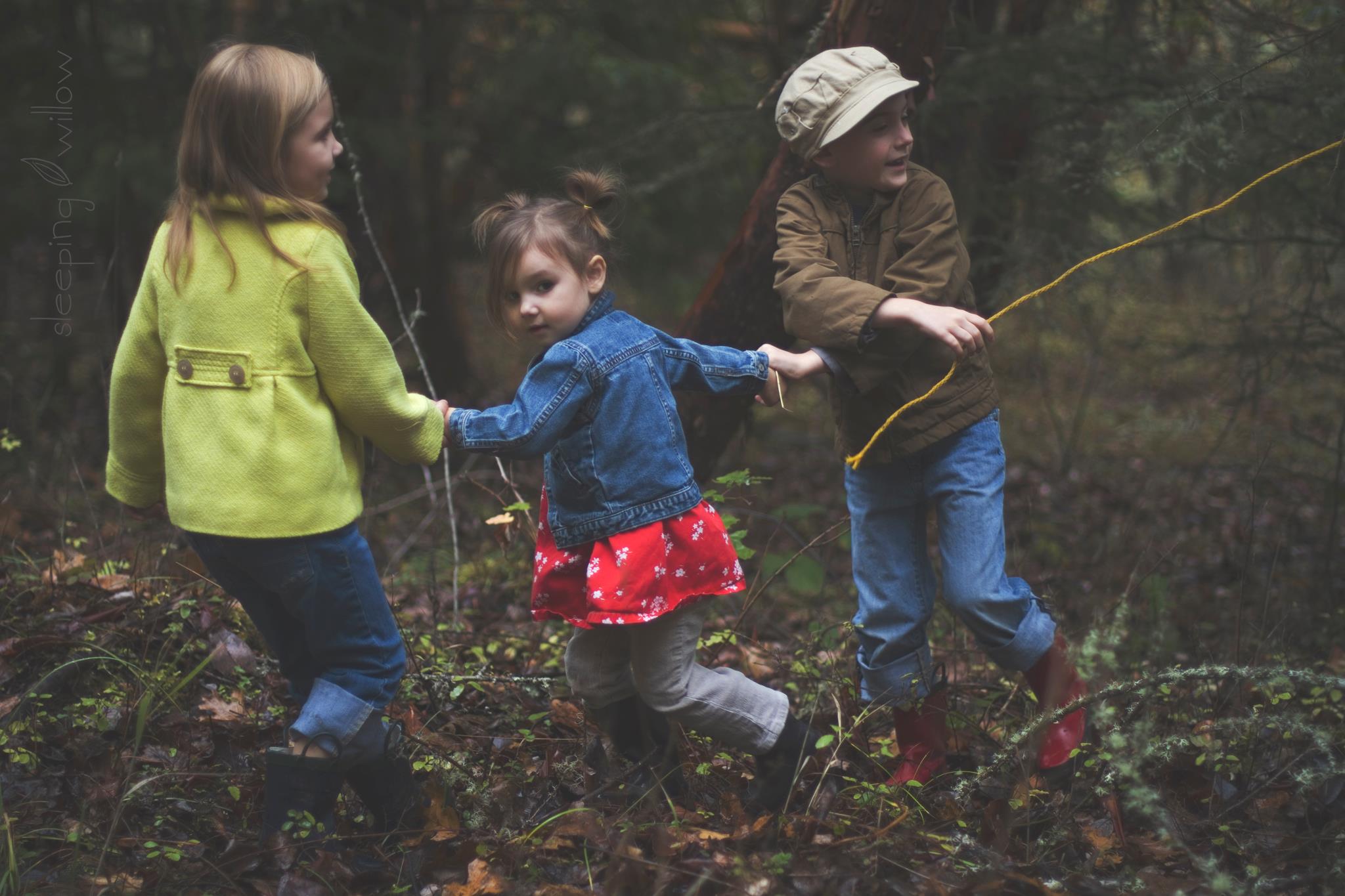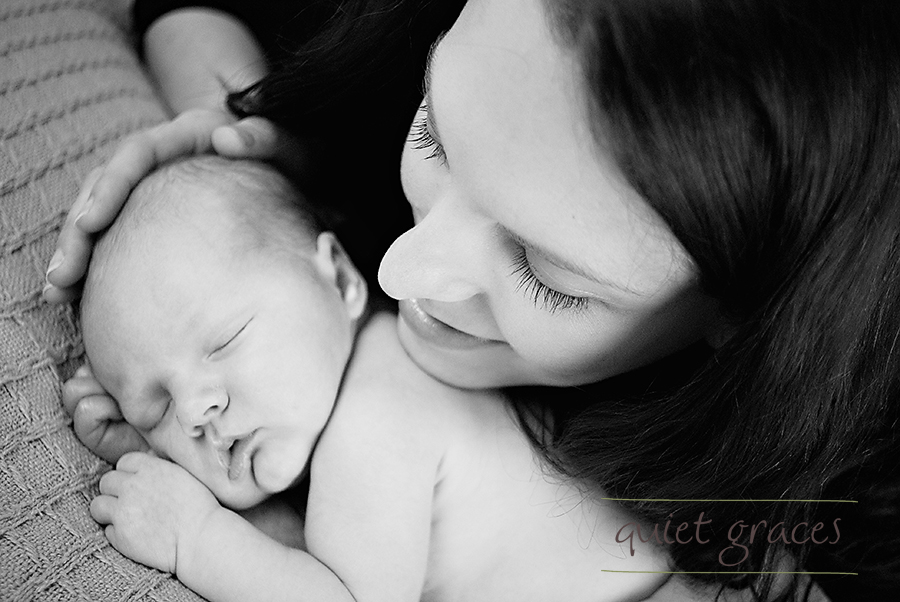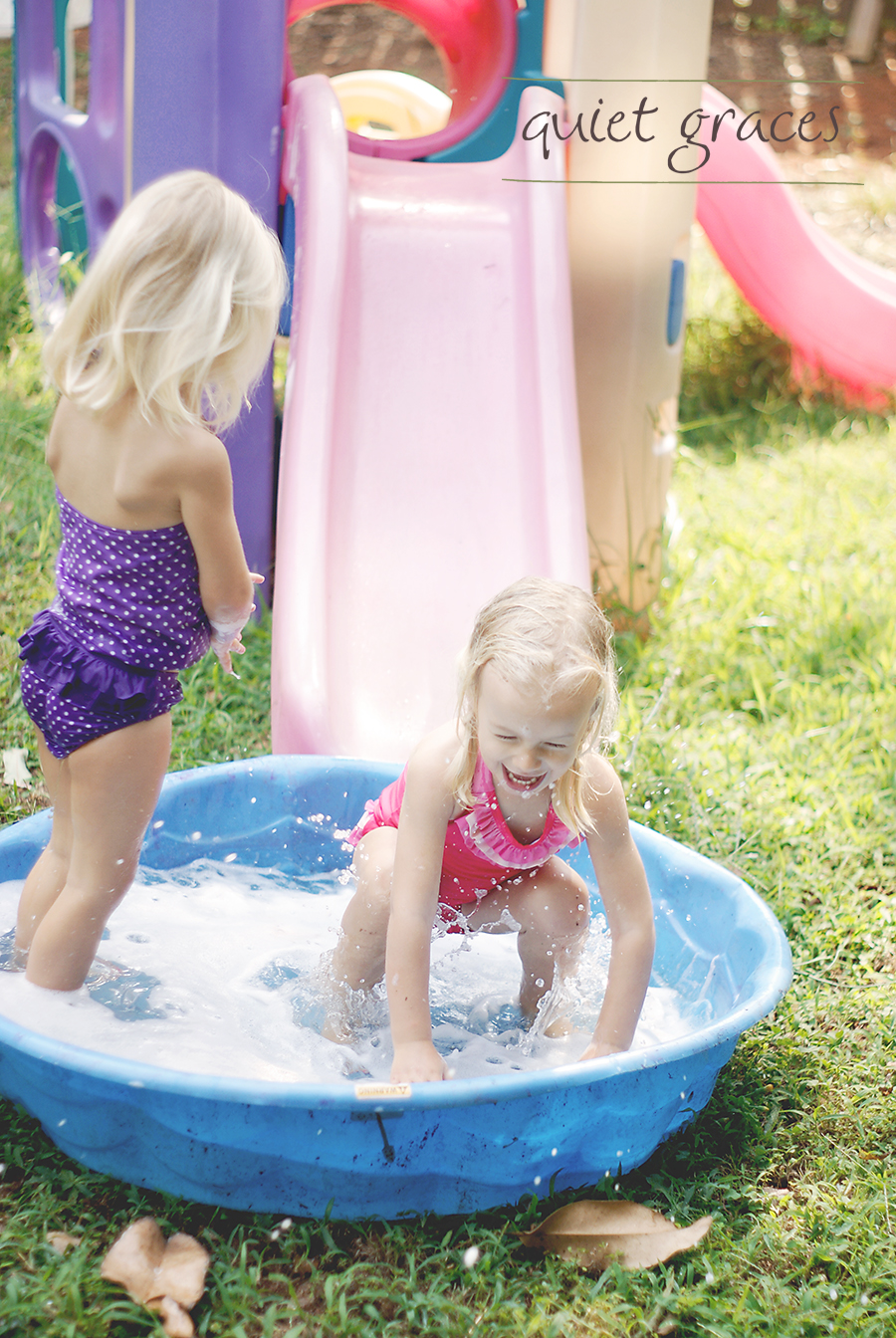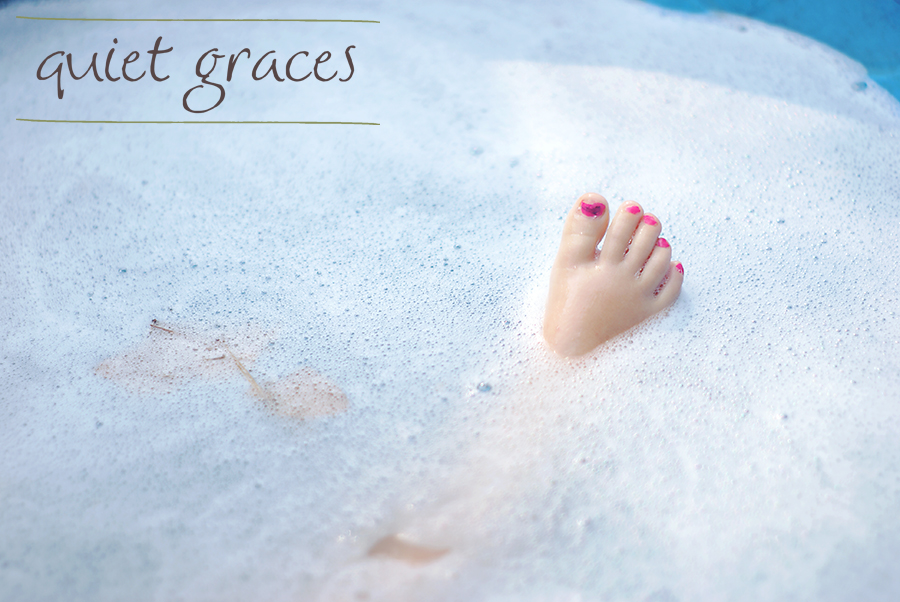15
2013Why do I Need to Know How Cameras Work?
I can already see you scowling at the screen. “Seriously? I was hoping you were going to show me how to make beautiful pictures! I don’t care how cameras work !” Don’t click away yet!
Knowing how cameras work will help you understand how to make better images. When you understand what your gear is doing, you know how to use it to create the image you want.
Don’t worry, I’m not going to bore you with unnecessary details about megapixels or 35mm film or image resolution (these are things I still barely understand!). So lets dive in together, shall we?
What is THAT?!

This is a pinhole camera. If you distill a camera down to it’s simplest form, you’ll get what you see above. You can make a camera out of a box, or a can, or an oatmeal container. It just needs to be light-tight except for that tiny pinhole and have some light sensitive material to record the image.
How Cameras Work
We’re going to grossly oversimplify this so I don’t lose you. Below is a diagram of a camera and a quick bullet list defining all the parts.
- Light: I know, technically not part of the camera; however, it’s essential to the process so humor me! When you make an image, you are recording the reflection of light. Colors reflect light differently. Black gobbles up light completely, white reflects it all back, and the rest of the colors do something in between. Your camera’s job is to capture reflected light.
- Enclosure: Your camera’s body. The cardboard box in the pinhole camera above. Your camera enclosure is probably a nice little plastic or metal thingy with a variety of buttons, screens, and a viewfinder. The main purpose of the enclosure, outside of giving you something to hold, is to keep all light out! Any light leaking through the enclosure will make capturing an accurate image nearly impossible.
- Lens: The thing that focuses the light on your recording medium. Our pinhole camera doesn’t technically have a lens. But your camera probably does. Whether it’s detachable or not depends on the type of camera.
Lens come in a variety of focal lengths; they can be wide (so you can see the whole mountain range) or telephoto (so you can stand on the sidelines and capture the game). They can be fixed/prime (only do one thing: wide, or telephoto) or zoom (switch between the two). Camera users can switch lenses or use different focal lengths for different effects. - Aperture: The hole that lets in the light. The pinhole camera’s pin hole (literally… pin sized) lets in very little light but creates an image where everything is equally in focus across fore, mid, and back grounds. Our cameras have much larger aperture holes and therefore do not focus equally in all parts of the image. This is going to be a key concept later! Aperture is generally in a part of your lens referred to as the aperture ring.
- Shutter: The Shutter is the screen covering your recording medium until you are ready to take your image. See that piece of square tape in the middle of the pinhole camera, that’s the shutter. Your camera shutter is internal. That button you press is called the Shutter Release and it causes the shutter to move out of the way. Camera users can change how quickly the shutter.
- Recording Medium: This is what records your image so you can view it later. With the pinhole camera, it’s most likely a piece of film. With digital cameras, it’s a light sensitive sensor. The size of your recording medium (both film and sensors) directly effects the detail quality of your image. The larger your recording medium, the more detail you’ll see in your final print.
Additionally, recording mediums are like skin: some sunburn in 30 minutes and others take 5 hours to even tan up a bit. You don’t want to use a recording medium that sunburns easily on a bright day nor do you want to use one that takes hours to tan up when you’re working with less light. This speed of recording light is called ISO.
Why all This Matters?
There’s two things you can’t change when you press your shutter release button: the enclosure of your camera and the light reflected from your scene (although you can modify/control the light with flash or location change). But there are 4 things that you can change, usually with a click of a few dials or a quick lens change.
When you know how cameras work, you can begin to understand how and why to change lens, aperture, shutter speed, and recording medium (ISO) to get the results you want.
Mini Homework
This is probably the simplest and most annoying homework you’re going to get. You’re really going to hate me for this and I’m likely going to repeat this mini homework a few times.
READ YOUR CAMERA’S MANUAL! Maybe not the whole thing… because that’s probably more than you want to bite off at one time. We’ll be doing a lot of camera manual browsing throughout this course and each time it will be more in-depth and specific.
This time through your manual, I want to you find sections that tell you how to zoom or change your lens (if applicable), change your aperture, change your shutter speed, and change your ISO. But don’t just read. Depending on your learning style you might want to highlight these sections with different colored markers. You might want to YouTube your camera model and see if you can watch someone else change these things up. You might want to pull out your camera and practice toggling those buttons. You might want to dive in and just play with those settings and see what happens. Do whatever it takes for you to get a feel for the vocabulary introduced above.
If you have any questions please, jot them down in the comment section below. No question is stupid. We’re all here to learn. I’ll do my best to answer each of them. However, this week might have a lot of “We’ll get to that in a different lesson.” type replies. When I post on that topic, I’ll try to come back and link you to that post.
08
2013Learn to Critique Photos
Here in the beginning of this series there’s going to be a pile of super informative posts. It’s a necessary evil. Without knowing about your camera and why it does what it does, you’re not able to utilize it to the fullest. But I don’t want you to just be sitting here absorbing all this information and not practicing and growing. So while I’m preparing a post on how cameras work and the types of cameras out there, we’re going to learn to critique photos. Starting with self-critique.
Critique sort of gives me the heebie jeebies. You know the kind of feeling where even the most powerful antiperspirant in the universe will not be any aid to you whatsoever. Oh, wait… maybe I’m the only one who sweats like a marathon runner in these situations. I digress. Ahem.
No matter how much we fear critique, we must understand that constructive criticism is the quickest road to growth. I know that when my loving friends point out sin in my life, not only do I recognize my error faster, but I’m able to identify both the cause and the solution relatively quickly with their help. This same process occurs in photography critique.
When you can clearly state what you like about a photograph, clearly state what could be improved in a photograph, and give clear suggestions for improvement (whether on your own photo or on someone else’s photo), you’re able to improve each shot you take. Additionally, recognizing what you love about each photograph will help you develop a consistent style.
Assignment #1
So here’s your mission possible. Over the next three weeks, I want you to pull out your camera and use it for 5-10 minutes each day. Take photos of whatever your heart desires. Flowers, trees, tickle fights with your kiddos, sleeping babies, your sink full of dirty dishes, your sister’s jewelry collection. The sky is the limit! (really… some images of the sky might be rocking awesome and very challenging to capture). Record whatever it is you love to photograph most.
On the last few days in this three week period, I want you to pick 5-10 images that are your very favorite. You can edit if you’re familiar with editing or just leave them straight out of the camera (SOOC). Pick the images that make your soul sing and slap them into a blog post (or Flikr album for those of you who may not blog). Get them in chronological order of the date/time they were taken. You might find that all your images were shot on the same day and are part of a story. You may find that your images are vastly different, some dark and moody with others whimsical and ethereal. That’s totally okay. Just pick your favorites.
Under each picture write a sentence or two about what you love most about that image. Was it the way the sun light just seems so warm and inviting? Was it the emotion captured? Was it an emotion that your image evoked in you? Was it the way your eye feels drawn to some part of the image that you might not have even noticed when you clicked the shutter?
Now take a deep breath, put on a good coat of your favorite antiperspirant, and look at those photos with a critical eye. Is your focus sharp? Do the colors seem funky and maybe too orange or too blue? Is there something distracting in the background? Do you wish your subjects were in a different part of the frame? Is the image darker than your eye saw it? Is the image too light? Is your subject squinting? Does it look like a tree branch is growing out of your subjects head? Did you over edit a certain area (if you are able to ice skate on your subjects sparkling eyes… you might have over sharpened)?
The Oreo Cookie when you Learn to Critique Photos
I’m a firm believer that when you critique anyone on anything you need to make an Oreo cookie. Good, not so good, and good. Hearing just the bad doesn’t always motivate me to change. Hearing only the bad might make me angry or resentful. I might feel hurt or hopeless that I could ever change. But hearing good, not so good, and good again, lets me know that the person giving the critique cares for me, sees an area of needing growth, and also recognizes my efforts. I feel both humbled and encouraged.
After you’ve told us why the photo is your favorite and recognized areas that might need growth, I want you to go back and look for the good. Compare the photo to ones you took earlier in the three weeks. Did your skills grow? How? Did you manage to freeze the action of that tickle fight where you hadn’t managed to before? Did you blur out what might have been a distracting background? Did you apply something you had just learned while completing the mini homework from the two Friday articles? What else makes this photograph good?
Turning in your Assignment
On Tuesday January 29th, 2013, I want you to be super brave and click publish on this blog post or Flikr album. I’m going to host a link up here so we can all view each other’s work. You’ll be instructed to visit the sites of the two people before you and pick one of their images to practice giving constructive criticism to another person. Don’t skip this step! First, commenting on someone’s post is going to help build this community. Second, practicing critique is going to help you look at a photo beyond the initial emotional impact. Third, openly receiving someone’s critique is the quickest way to grow.
Now here’s the last thing I want you to hear: There are certain areas of art that are always pure opinion or a matter of personal style. I don’t want you to be shattered if someone thinks your image is too dark, but you like dark images. I like my images bright and sun-drenched, but that doesn’t mean that I can’t adore The Sleeping Willow’s darker, moodier, and whimsical images of her children; we simply have a difference in style.

All of these images are Hannah’s from The Sleeping Willow. They’re so different from my style exhibited above and I adore each of them!
Don’t be shattered when someone comments on something you think is integral to your style. That said, please be humble enough to listen and look for the hint of truth in what they said.
Most of all, I want you to spend these three weeks exploring and having fun. I can’t wait to see what you love to photograph!
01
2013(Note this class is from 2013. Each class lesson is still below but you will not receive any instructor feedback and the Flickr Group is no longer active.)
I’ve had a camera in my hands for the better part of 12 years now. I was a 16 year old kid chasing around my babysitting charges. A 17 year old kid spilling chemicals all over the darkroom. An 18 year old kid hand coloring a black and white image. A 20 something recording those crazy moments on your dorm that bring so much laughter. A mid 20s mom taking pictures of her kiddos.  For two years now, I’ve been called to pursue this craft professionally. I’m not making a whole lot of money right now and, honestly, a lot of my clients are friends and family who are receiving a gift. Money isn’t really what I’m after. No, my end goal is to have a client laugh over the capture of that one face their their kiddo makes that is so them, to walk into a client’s house and see that frozen in time moment right above the mantle, or to give that mama an album exploding with her whole family while she weeps tears of joy. Those are the moments that make my soul sing. I love giving the gift of photography to clients and friends.
For two years now, I’ve been called to pursue this craft professionally. I’m not making a whole lot of money right now and, honestly, a lot of my clients are friends and family who are receiving a gift. Money isn’t really what I’m after. No, my end goal is to have a client laugh over the capture of that one face their their kiddo makes that is so them, to walk into a client’s house and see that frozen in time moment right above the mantle, or to give that mama an album exploding with her whole family while she weeps tears of joy. Those are the moments that make my soul sing. I love giving the gift of photography to clients and friends.
Teaching the Craft
When I pause to dream about where this business might go, there’s always a tug on my heart to teach. To gather a group of friends around me and teach them to capture their own memories. Give a man a photo and they’ll cherish the memory forever. Teach a man to take photos and they’ll capture memories forever. I’ve tried numerous times to do just this, but in this season of life it’s just hard to do. Eventually, I’d like to host (or be a part of) one or two day retreats to help new photographers learn their craft, but that time is not now. Yet while participating in Holley Gerth’s God-Sized Dreams Team and reading her early release of the Do What you Can Plan, I realized that maybe I can slowly move toward this dream. What if I start compiling my resources now? What if I invite you, my readers, to explore the craft of photography with me in a free beginner photography class right here through this blog? 
Would you join me in a Free Beginner Photography Class?
I’ll commit to posting on one topic every Tuesday for the next 52 weeks. You can stop by as often as you like and soak up as much information as you dare. I’ll throw in 20 or so large assignments and a mini assignment for each post as we cover the material and host a Flickr Group so we can see your finished projects and chart your growth. As I watch you grow, I’ll invite some of you to guest post your images and contribute your learning.
What will the Class Cover?
Here’s a brief list of upcoming topics. As I post in this series, I’ll update this list with a link to each individual post for easy reference.
- Assignment #1: Learning to Critique Photos
- How Cameras Work
- Camera Types
- Photography Critique Assignment Link-Up
- Camera ISO and Assignment #2
- Shutter Speed and Assignment #3
- Apeture and Assignment #4
- Depth of Field: Further Study
- Camera Light Meters and Metering Modes
- Program Mode
- White Balance
- Introduction to Storytelling with Images
- Rule of Thirds
- Student Images
- Leading Lines
- Try a Different Angle
- Detail Images
- Diptych and Triptych
- Lens Type: Zoom or Fixed Focal Length
- Lenses: Differences on a Full Frame and Crop Sensor Body
- Lenses: Focal Lengths-Wide to Telephoto
- 6 Month Student Reviews
- Camera Lenses: Recommendations and Buying
- Using your Camera in Manual Mode: Exposure Triangle
- Photography Exposure Stops
- Manual Mode Workflow
- Exposure Bracketing
- Setting Exposure in Manual Mode: the Zone System
- Painting with Light: a lighting overview
- Natural Light
- Front Lighting
- Side Lighting
- Back Lighting
- Available Light
- Modifying Light Part 1: Reflectors and Diffusers
- Modifying Light Part 2: On Camera Flash
- Portrait Lighting
- RAW or JPEG?
- Changing your Perspective
- Final Assignment and Announcements
- Nailing Focus
- Editing Software Overview
- Basic Editing: Brightness and Contrast
- Basic Editing: Magic Histograms with Levels and Curves
- Basic Editing: Converting to Black and White
- Basic Editing: Layer Masks
- Editing a Naturally Dark Image
- Final Assignment Due Date and Action/Preset Love
- Quick Clean Edits in Lightroom and Photoshop Elements
- The Finish Line and My Final Project
- Amber’s Final Project
- Teddy’s Final Project
Please let me know in the comments below what you’d like to learn over the next 52 weeks and I’ll be sure to include it! I can’t wait to see where this journey will carry us!








